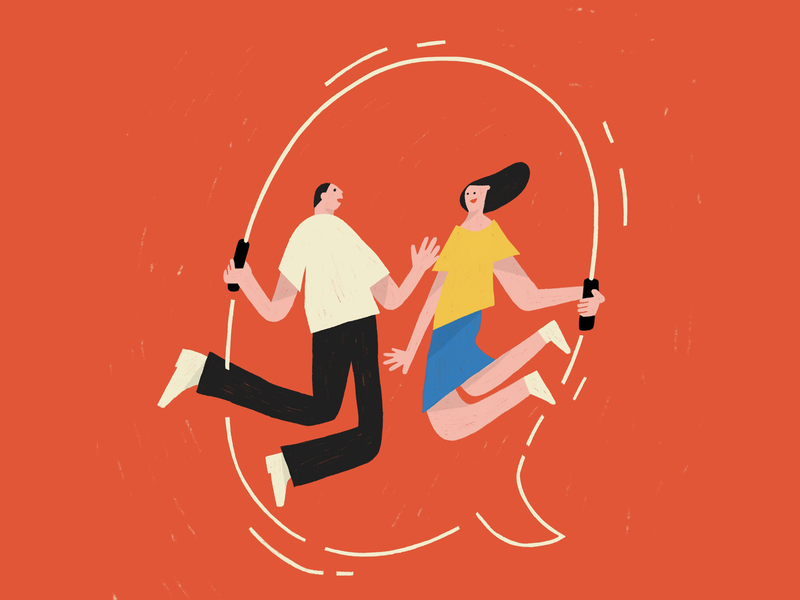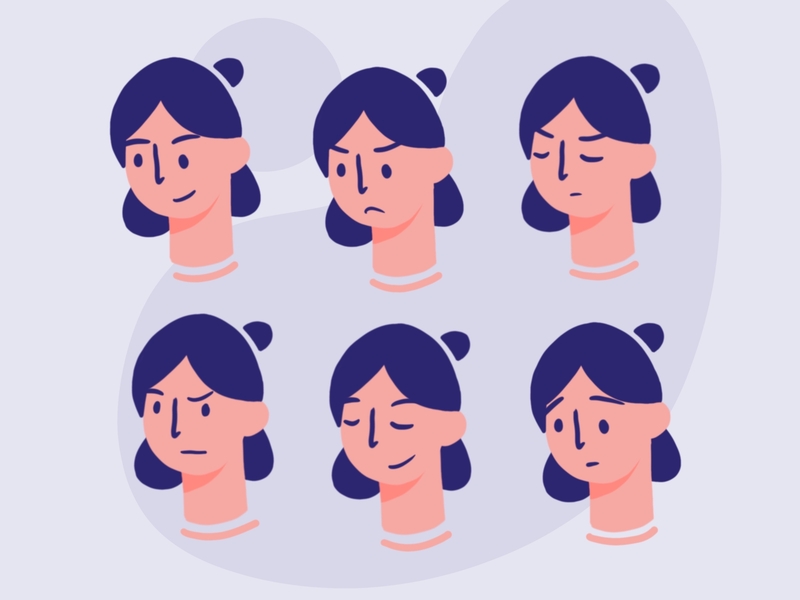In this article, UX Designer Maximiliano Cabrera breaks down some key behavioral queues to be aware of during the user research process and explains how to create a better rapport with participants for more accurate results.
The most unpredictable part of a UX designer’s job is people. Being able to manage and lead users with different personalities and backgrounds requires a set of soft skills that take practice and time to develop.
When it comes to user research, making a strong connection and creating a comfortable atmosphere is key to getting more accurate results from participants. You need to be able to carry on a conversation while actively listening and picking up on physical queues—which doesn’t always come naturally.
As humans, we say way more with our body language and facial expressions than we do with our words. Physical reactions and tone of voice are huge indicators of what someone is experiencing, and as a UX designer, picking up on these queues is your opportunity to learn more about a person or a product.
To help you create that empathetic link and improve your user research overall, here are a few psychological and behavioral approaches to practice:
First things first: Engage in small talk
As a UX designer, it’s important to know how to fill gaps in conversations and recognize an individual’s comfort level. This all starts with a respectful tone of voice and making a strong connection early on so users feel both heard and cared for.
Small talk is a learned skill that helps fill these conversational gaps, priming questions such as age, profession, and familiarity. Don’t be afraid to reveal personal information of your own if you think it may help open up the discussion or make a user feel more comfortable.
Read body language
Body language refers to the signals and cues that our body makes. These signals are important because they are strongly tied with what we are trying to communicate. Regardless of our emotional state, our brain is constantly filtering data received through our five senses. Whether we’re searching for pleasure or safety, the data collected in our brain causes involuntary reactions.
You need to look for those reactions to further understand people’s real feelings. Body language is often more honest than what people tell you. For example, participants during interviews are known to express experiences more positively than they perceived them so that they don’t feel like a failure or feel uncomfortable giving you a negative critique.
Mirroring can be used proactively to a certain extent since it’s a natural reaction. When engaging a difficult conversation, purposely mirror a user’s body language. As the conversation progresses, shift to more open body language and see if the participant does the same. Physical stances can directly impact our mental state, and if you get the participant to mirror your open physical positions, they are more likely to be more open with their feedback.
Key body signals
- Open arms and legs: Your mindset is open to new ideas, meaning you’re more approachable and agreeable.
- Closed arms and legs: Defensive and potentially closed-off state.
- Stretched out arms and legs: Expands your personal space or asserts your presence.
- Leg positioning: Your legs like to point in the direction you want to move. For example, if your legs are crossed and pointed at the door, there’s a chance you may not want to be wherever you are.
- Head movements: Looking up can indicate that you’re accessing your imagination and potentially being deceitful. Looking down may indicate that you’re accessing your memory and potentially being more truthful.
Observe micro-expressions
Micro-expressions are the subtle ways your face reacts, sometimes voluntary and other times not. An example of this is the natural crow’s feet that appear around your eyes when you smile. If it’s a genuine smile, those muscles around the eyes contract involuntarily. Being aware of different kinds of micro-expressions and knowing how to use them in the right context gives you another advantage.
For example, not everyone acts naturally during research sessions. That’s because research is unnatural in the first place, and people might feel obligated to tell or show what they think you want to hear. By watching a participant’s micro-expressions, you can redirect or follow up with probing questions to better understand how they are using your product.
The best way to use micro-expressions is to couple observation skills with active listening skills. You will see hints of truth, deceit, and reservation that can help inform your probing and follow-up questions.
There are many common micro-expressions that you should look out for. Although the interpretation of expressions is universal, emotions in the face tend to change depending on the social context. The expressions on the list below are generic enough that just about everyone does them and if you pay close attention, you’ll be able to better predict when you should probe deeper:
Surprise
Eyes open wide and jaw dropped. Something has happened that was not expected and you should try to learn what this was, why it surprised them, and what they were expecting.
Fear
Eyes wide, mouth barely open, and forehand wrinkled. They might feel like they made a mistake and have failed in some way. You will want to know why they are feeling this way and how to ease this feeling.
Disgust
Teeth bared, nose wrinkled, and eyes slightly closed. Whatever the participant was saying or doing does not agree with them and they feel “offended”. Get to the heart of this offense and try to learn why they feel this way.
Happiness
Broad smile, crow’s feet around the eyes, and raised cheeks. The product or topic on hand is clearly one that makes them feel good. Probe into why they feel so happy about what’s happening and try to probe the triggers of this response.
Contempt
Partial fake smile and squinting eyes. The participant doesn’t trust what just happened or whatever you have just said. Probe into where this distrust is coming from and how it’s affecting the participant.
Understand cultural implications
If working with a product that has a global presence, you will encounter situations where non-verbal cues from one culture don’t apply to another. Something as simple as a thumbs up to show that everything is OK in one culture might be an offensive symbol in another culture.
Research different social norms and the background of any country in which your product will be used. You’ll want to know how authority is perceived, how gender roles differ, how foreigners are viewed, and what topics or gestures are a sign of respect or disrespect.
One of the best places to learn about local customs and social norms are tourism sites. This content has been curated for years to ensure visitors have all the information they need to enjoy their trip and avoid negative experiences with locals.
Takeaways
The next time you conduct user research, try to make participants feel more comfortable by starting out the session with small talk. Throughout the research session, actively observe body language and micro-interactions to help you probe in the right direction and get a more accurate evaluation. Finally, make sure you’re aware of any cultural implications that may factor into a user’s reactions. Keep practicing these soft skills and you’ll be well on your way to improving your research results and gaining a better understanding of your product.
About the author: Maximiliano Cabrera is a User Experience Designer, enthusiast writer, and researcher. Find him at maxicabrera.com.
Related articles
- 5 soft skills every product designer should master
- 11 tips for presenting your UI/UX designs to non-designers
- 3 design storytelling tips to help you nail your UX interview
Find more Process stories on our blog Courtside. Have a suggestion? Contact stories@dribbble.com.















